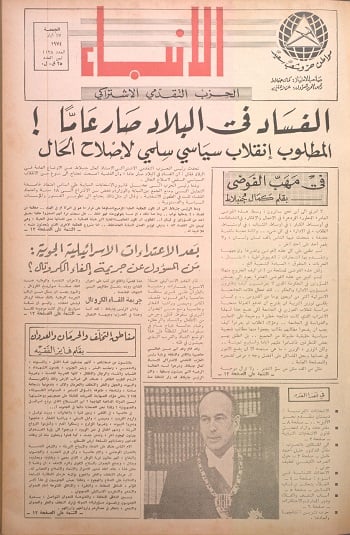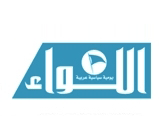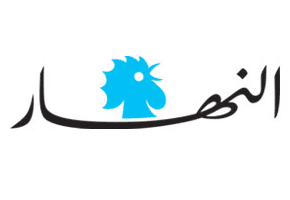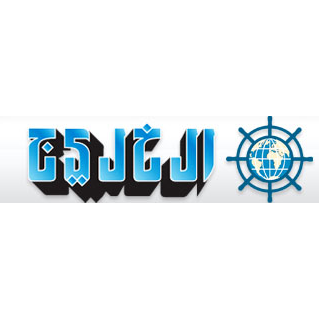Can Tehran afford its regional adventures?
Ali Alfoneh /The Arab Weekly
25 يناير 2018

Consider the slogans chanted on Iran’s streets during the recent anti-regime protests. “Neither Gaza nor Lebanon, I sacrifice my life for Iran” and “Let Syria be, think about our plight,” the protesters shouted
The Iranian regime suppressed the protests but the structural economic and political problems, which forced the people onto the streets in the first place, remain. With no prospect of the regime addressing those problems, Iran is likely to be faced with rising public anger and instability.
Chief among Iran’s structural problems are its reliance on oil revenue and its imperial ambitions based on the unstable price of that resource. The oil price has recovered in recent weeks but the future is uncertain. More certain is the fact the regime will spend on its regional military adventures.
The amounts the regime expends on military conflicts in the Middle East region are vast. Steven Heydemann of the Brookings Institution, a Washington think-tank, said Iran’s annual support for Bashar Assad’s regime in Syria amounts to $15 billion-$20 billion.
Tehran’s annual support to the Lebanese Hezbollah is believed to be just short of $1 billion. This largesse was recognised as such by the militia’s general-secretary. “Hezbollah’s budget, salaries, funds, food, drink and weapons all come from Iran… As long as Iran has money, we have money,” Hassan Nasrallah admitted in June 2016.
By comparison, Iranian President Hassan Rohani’s draft budget for Iran’s calendar year, which starts March 21, is $103.9 billion. The latest Central Bank of Iran statistics indicate that Iran had a budget deficit of $5.3 billion in the first seven months of the current fiscal year.
Iran’s ruling elites probably hope for an end to the war in Syria. It would lessen the burden of financing Assad’s regime and reduce the costs of maintaining Lebanese Hezbollah. Hope, however, is not a strategy.
Faced with the growing budget deficit, Rohani had to make a choice. He was aware that every penny spent to support the Syrian regime, Hezbollah or the Palestinian Hamas movement could have been used to reduce the deficit. Money spent at home rather than abroad could improve the plight of Iranians. However, the Iranian president is not empowered to reduce funding for strategic allies.
This is why Rohani’s attempt to balance the budget became an exercise in cutting subsidies on foodstuffs and energy. This infuriated low-income groups and bread riots erupted in the poorer neighbourhoods of Iranian cities.
Rohani subsequently withdrew the subsidy changes and the regime continues to fund regional allies. Taken together, these will deepen the budget deficit and, in the long term, lead to economic collapse.
In a sense, Iran’s structural problems resemble those of the closing years of the Soviet Union. Heavily dependent on the price of oil and just as heavily engaged in financing strategic allies and proxies, the Soviet Union was faced with a difficult choice as the oil price declined. It had to appease its hungry population and give up its empire. Or it could keep the empire and suppress the hungry masses. In a few years, even that choice may seem like a luxury for Iran’s rulers.
 عن أمل جنبلاط المتجدد: لبنان يستحق النضال
عن أمل جنبلاط المتجدد: لبنان يستحق النضال
 صحافيون أم عرّافون!
صحافيون أم عرّافون!
 ماذا يجري داخل أروقة بيت الكتائب المركزي؟
ماذا يجري داخل أروقة بيت الكتائب المركزي؟


 عن الخرائط التي تُرسم والإتفاقات التي تتساقط!
عن الخرائط التي تُرسم والإتفاقات التي تتساقط!
 “الإنحراف في الحياة”/ بقلم كمال جنبلاط
“الإنحراف في الحياة”/ بقلم كمال جنبلاط
 هاشتاغ #صار_الوقت يحل أولاً في حلقة جنبلاط
هاشتاغ #صار_الوقت يحل أولاً في حلقة جنبلاط
 طاولة نقاش عن أزمة الصحافة في جامعة AUST
طاولة نقاش عن أزمة الصحافة في جامعة AUST
 عبدالله: ليظهر لنا وزير مكافحة الفساد حرصه في صفقات البواخر والفيول
عبدالله: ليظهر لنا وزير مكافحة الفساد حرصه في صفقات البواخر والفيول
 عبدالله: غريب أمر وزارة مكافحة الفساد!
عبدالله: غريب أمر وزارة مكافحة الفساد!

 Comment to Uri Avnery: How Sad What Is Looming Ahead
Comment to Uri Avnery: How Sad What Is Looming Ahead
 “Not Enough!”
“Not Enough!”
 … لمن لم يقرأ يوسف البعيني/ بقلم وسام شيّا
… لمن لم يقرأ يوسف البعيني/ بقلم وسام شيّا
 كمال جنبلاط في مولده الأول بعد المائة: تعاليمه وأفكاره ما زالت الحلّ/بقلم عزيز المتني
كمال جنبلاط في مولده الأول بعد المائة: تعاليمه وأفكاره ما زالت الحلّ/بقلم عزيز المتني
 رئيس حزب/ وليس (… سابقاً)/ بقلم د. خليل احمد خليل
رئيس حزب/ وليس (… سابقاً)/ بقلم د. خليل احمد خليل
 التوازن السياسي في لبنان
التوازن السياسي في لبنان
 لبنان… مشاريع انقلابية مؤجلة
لبنان… مشاريع انقلابية مؤجلة
 جنبلاط وحَمَلة أختام الكاوتشوك
جنبلاط وحَمَلة أختام الكاوتشوك
 Le Liban est un symbole de tolérance
Le Liban est un symbole de tolérance
 Our Automated Future
Our Automated Future
 The True Origins of ISIS
The True Origins of ISIS
 Les Misérables vs. Macron
Les Misérables vs. Macron
 عذراً أيها المعلم/ بقلم مهج شعبان
عذراً أيها المعلم/ بقلم مهج شعبان
 رساله الى المعلم / بقلم ابو عاصم
رساله الى المعلم / بقلم ابو عاصم
 إلى روح القائد والمعلم كمال جنبلاط/ بقلم أنور الدبيسي
إلى روح القائد والمعلم كمال جنبلاط/ بقلم أنور الدبيسي
 أسرار وعناوين الصحف ليوم الجمعة 14 كانون الاول 2018
أسرار وعناوين الصحف ليوم الجمعة 14 كانون الاول 2018














